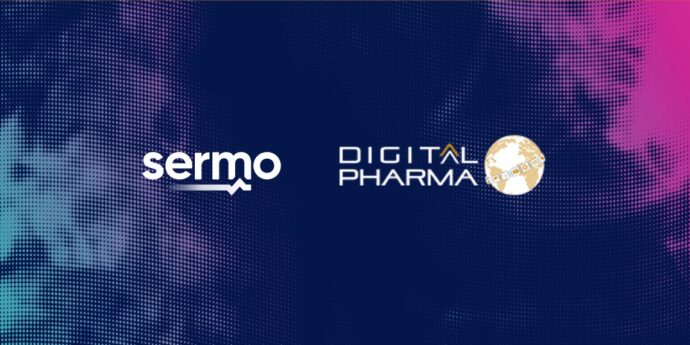
The 13th annual Digital Pharma East conference will feature key thought-leaders across the Life Science digital marketing industry who will share the latest digital, mobile and social strategies that yield results. Our very own SVP of US Commercial Development, Michael Joachim, will be presenting “The Three Pillars of Social Marketing for Pharma: Understand, Influence, Optimize” at the conference on September 17th. To help us “prep the stage,” we’re sharing this Digital Pharma East Q&A from Michael.
1) We often talk about digital disruption and its impact on healthcare and pharma, what are some emerging technologies that will disrupt the industry yet again, changing the way pharma does business in the next 5-10 years?
- The pharmaceutical industry is one of the most highly regulated and technology-intensive industries today. To disrupt such an industry, next generation technology including artificial intelligence (AI), digital therapeutics, and wearables will need to meet the demands of those at the forefront of the health care industry – physicians.
- As application and investment in AI is rapidly gaining momentum, it will be imperative for organizations to address its business value outcomes, cross functional impact and how it can be leveraged to transform the way pharma will do business over the next 5-10 years. AI in healthcare is estimated to grow from 43.5% in 2018 to reach $27.6 billion by 2025. It’s no surprise as AI has already disrupted concentrations from psychiatry to cancer care.
- Digital therapeutics and wearable technology are other areas of focus that will continue to play a bigger role for both physicians and patients. There’s a big opportunity to create a more consistent and seamless disease management dialogue, allowing technology to become the communication bridge.
2) Because pharma is a highly regulated industry, it still lags behind in adapting to digital trends. Can you identify some challenges pharma stakeholders continue to face in building and implementing processes that convert and your suggestions on how to overcome those challenges?
- One challenge that pharma stakeholders continue to face when implementing digital trends stems from the design, production, and functionality of assets and content, all of which requires regulatory approval. The development process is extremely labor intensive and inherently drives increased cost and time requirements. This dynamic feeds a pattern by which brands must prioritize and choose between digital assets (website, mobile applications, CRM system, analytics), all of which are crucial in today’s landscape.
- In order to address these challenges, technology can provide solutions:
- Dynamic creative optimization (DCO) would allow for more creative variations to digital assets while delivering a more relevant communication to the intended target.
- AI can additionally be trained to scan and do a first-pass review of regulatory assets at a faster pace than any human reviewer can perform.
- It’s also imperative to consider GDPR when adapting to digital trends and its implications on patient marketing as it represents the shift in how data is collected and used. Under GDPR, organizations must get consent from individuals and individuals can request that certain health history and habits be excluded from the record. For marketers, GDPR has set restrictions as to what a healthcare organization can send to a third party agency in the form of marketing messages.
3) AI has become the new BI. What does this mean for pharma in collecting big data and using it to build better business models?
- In research and development, big data and analytics are being adopted by the pharma industry to better inform decision making, improve efficiency of research and clinical trials and design new technology for physicians and healthcare organizations (HCOs) to approach health care in a more individualized way. The goal of greater accuracy, scalability, and less human error is also involved in this business model to allow for a deeper understanding of a HCO’s customers, which include both patients and physicians.
4) Patient centricity has also been a focal point for the industry for several years, has pharma done a great job in moving closer to value-based healthcare in keeping the patient and customers at the forefront of their marketing strategies?
- We feel that there is still some work that has to be done to help pharma move towards value-based healthcare while keeping the patients and customers at the forefront of their marketing strategies. Both populations value convenience and cost as much as quality. To reach this level of value-based care, areas of improvement include price transparency and mobile applications to support adherence.
- A great example is Ability MyCite System, which is a prescription medicine of an aripiprazole tablet with an Ingestible Event Marker (IEM) sensor inside it used in adults for the treatment of schizophrenia, bipolar disorder or major depressive disorder. This system is intended to detect and track the ingestion of Abilify MyCite through the MyCite application on a smartphone.
5) And last, what do you see as the major challenges in building a successful business plan for digital initiatives?
- Two of the major challenges the industry faces are in:
- Business lead continuity: All too often changes in brand assignments create operational inefficiencies due to continuous onboarding, adjustments to strategy, vendor assignments, and priority setting. From my past work experience, I once saw a single Rx brand have three different brand managers assigned in a 12-month period. It gave the feeling of “Ground Hog’s Day.”
- Siloed business planning: Components of digital marketing often fall within multiple departments based on how the organization is structured. The challenge then stems from the lack of consistency in organizational priorities (different Management by Objectives aka MBOs), funding (different cost centers), and decision making.
Check back soon for even more digital pharma insights!



